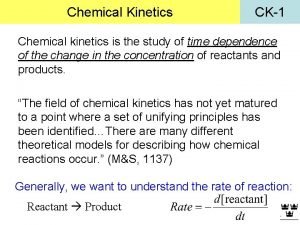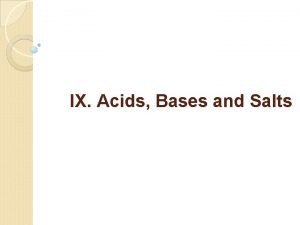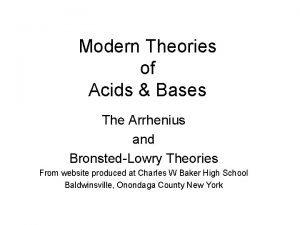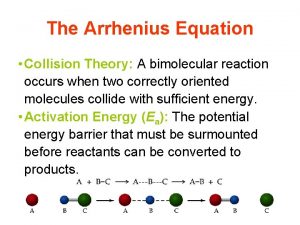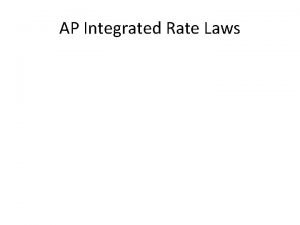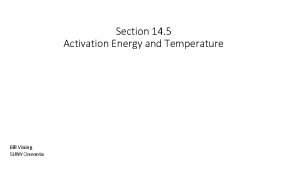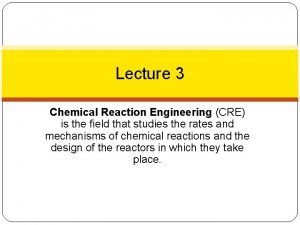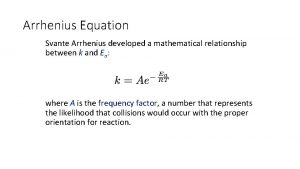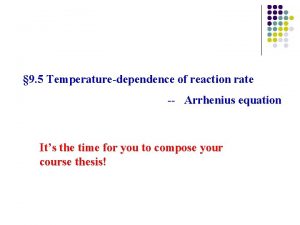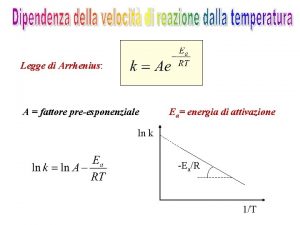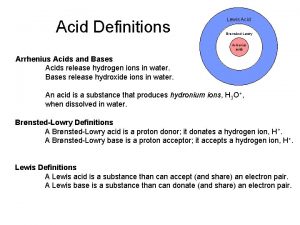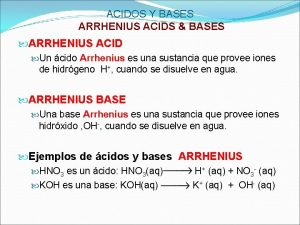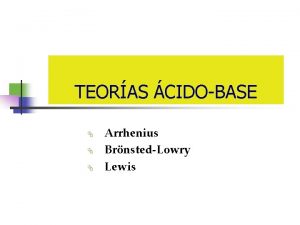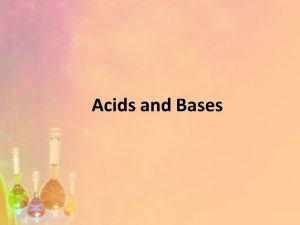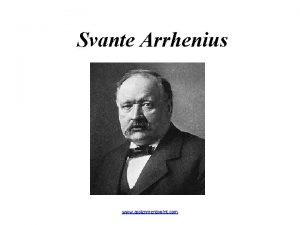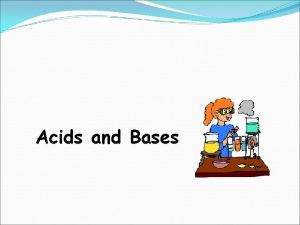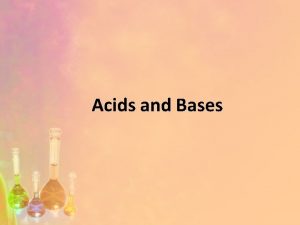Reaction Mechanisms Arrhenius Equation Reaction Mechanisms Some reactions












- Slides: 12

Reaction Mechanisms & Arrhenius Equation

Reaction Mechanisms Ø Some reactions are not represented in the reaction equation; such as, - Absorbing light energy - Colliding to the walls of the container Many reactions proceed through a sequence of steps to arrive at the products Ø Each step is called an elementary reaction and occurs through collision of atoms, ions and molecules. Ø

Reaction Mechanisms Ø The slowest step in a reaction mechanism is called the Rate-determining Step Ø In multistep reactions, increasing the concentration of reactants at any steps other than the rate-determining step will not increase the rate of reaction Ø A chemical species that form and then are consumed in the reaction is called Reaction Intermediates

Rate Equation Ø Ø m. X + n. Y -----> products of reaction or intermediates then r α [X]m [Y]n r = k[X]m [Y]n When writing the reaction mechanism, there are three rules: - each step must be elementary, with no more than three reactants - The rate-determining step must be consistent with the rate equation - The elementary steps must all add up to be the overall equation

� Elementary reactions (Molecularity) � Unimolecular; Decomposition (ex. N 2 O 5(g) NO 2(g) + NO 3(g)) rate = k[N 2 O 5] � Bimolecular; Collision of 2 atoms, ions or molecules (ex. NO(g) + O 3(g) NO 2(g) + O 2(g)) rate = k[No][O 3] � Termolecular; Simultaneous collision of 3 molecules (ex. 2 I(g) + Ar(g) I 2(g) + Ar(g) ) rate = k[I][I][Ar] = k[I]2[Ar]

� Reaction mechanism is a detailed sequence of elementary reactions, with their rate, that are combined to yield the overall reaction. � Consider the mechanism: 1) Cl 2(g) 2 Cl(g) 2) Cl(g) + CHCl 3(g) HCl(g) + CCl 3 (g) 3) CCl 3 (g) + Cl (g) CCl 4(g) � Some of the possible questions are…

a) What's the molecularity of each step? 1) Unimolecular 2) Bimolecular 3) Bimolecular b) Write the overall equation for the reaction Cl 2(g) + CHCl 3(g) HCl(g) + CCl 4(g) c) Identify the reaction intermediate(s) Cl(g) & CCl 3

The Arrhenius Equation To explain the large effect of temperature and catalysis, the Arrhenius Equation is used to account for their effects k = Ae-Ea/RT Ea is the activation energy (J) A is constant related to the geometry of molecule R is the gas constant (8. 314 J/(mol • K)) T is the temperature (K) Ø the answer k is the rate constant for the rate law equation r = k[A]n[B]m Ø

� By taking ln (natural log) to each side, ln k = -Ea/RT + ln A � Arrhenius equation is written for the rate constant determined at each temperature giving, ln k 1 = -Ea/RT 1 + ln A ln k 2 = -Ea/RT 2 + ln A � Subtracting second equation from the first, ln(k 1/k 2) = -Ea/R(1/T 1 – 1/T 2) � The rate and the rate constant are directly proportional to each other as long as the concentrations are held constant.

Examples � At 200 K the rate constant for a reaction is 3. 5 X 10 -3 s-1 , and at 250 K the rate constant is 4. 0 X 10 -3 s-1. What is the activation energy? Ea = 1. 11 KJ/mol � What is the rate of reaction at 450 o. C if the reaction rate is 6. 75 X 10 -6 mol/(L*s) at 25 o. C? The activation energy was previously determined to be 35. 5 k. J/mol. The rate of reaction at 450 o. C is 3. 05 X 10 -2 mol/(L*s)

The Arrhenius Equation Ø To test the answer for reasonableness, two principles must be remembered: 1) The larger rate constant (or rate) will always be associated with the higher temperature 2) The activation energy always has a positive sign.

Summary Reactions that contain more than 3 molecules colliding occurs in multi-steps Ø Each elementary step should only have 3 or less reactants Ø r = k[A]n[B]m Ø k = Ae-Ea/RT Ø Temperature and activation energy affects the value of k exponentially Ø
 Eyring equation and arrhenius equation
Eyring equation and arrhenius equation Vmax= k2et
Vmax= k2et Rate law units
Rate law units Arrhenius acid base reaction
Arrhenius acid base reaction Arrhenius reaction example
Arrhenius reaction example Use of arrhenius equation
Use of arrhenius equation Arrhenius equation two point form
Arrhenius equation two point form 2 point arrhenius equation
2 point arrhenius equation Arrhenius equation
Arrhenius equation Section 2 reinforcement classifying chemical reactions
Section 2 reinforcement classifying chemical reactions How to write redox half reactions
How to write redox half reactions Section 2 classifying chemical reactions worksheet answers
Section 2 classifying chemical reactions worksheet answers Chemical reactions section 3 reactions in aqueous solutions
Chemical reactions section 3 reactions in aqueous solutions


